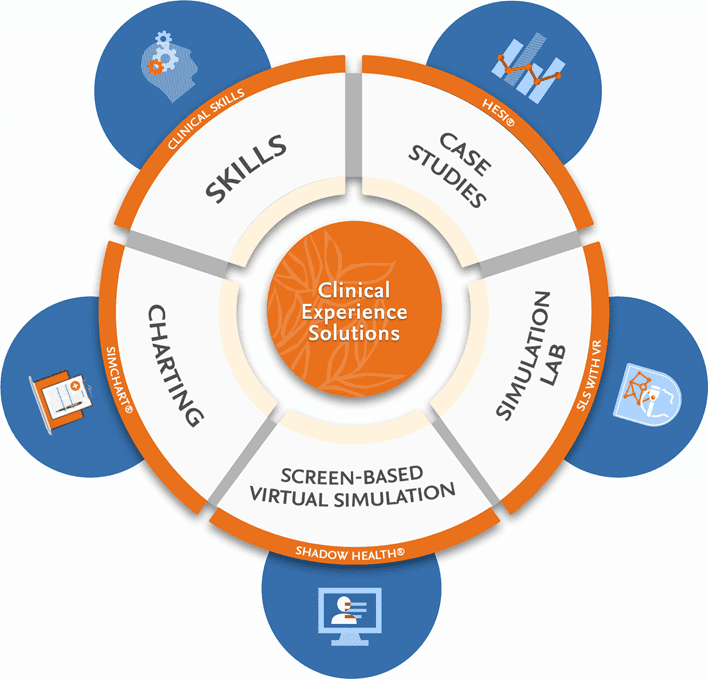
The American Nursing Association (ANA, 2010) states, “Clear, accurate, and accessible documentation is an essential element of safe, quality, evidence-based nursing practice.” A historical review of American nursing reveals the rich evolution of documentation in the profession. The practice of documentation in nursing shifted from verbal to written records (paper-based and digital), and refined into a comprehensive communication system for use across the healthcare team (Nightingale System, Nurses Progress Notes, Patient Medical Record, Problem Oriented Medical Record [POMR], SOAP [Subjective, Objective, Assessment, Plan] notes, and Electronic Health Record [EHR]). The essence of documentation, however, has remained the same—to chart relevant and precise information about a patient for ensuring quality and safe care. Undoubtedly, teaching students about proper documentation is an important goal in nursing education, and learning the skill is essential for students’ practice readiness.
As a learning scientist, I strive to support faculty practices and student experiences at the intersection of technology, pedagogy and content (Shah, 2021). Therefore, in this article, I focus on the goal of developing nursing students’ competencies in documentation with Elsevier’s Course-based SimChart® as an example. Launched in 2021, this digital learning solution is a part of Elsevier’s expansive portfolio of clinical experience solutions (see Figure 1). Course-based SimChart integrates documentation practice within unfolding case studies. This article provides an overview of relevant topics associated with documentation and invites nursing educators to explore related literature in greater detail. A description of the core principles follows to underscore the significance of this skill for future nurses. The article then focuses on the growing support for Electronic Health Record (EHR) in nursing education programs as well as unfolding case studies as a useful pedagogical approach for practicing documentation. Finally, a case is made for deepening students’ practice of documentation through relevant opportunities in basic and advanced courses in nursing education. The extant literature underscores the benefits of adopting a digital learning solution like Course-based SimChart for teaching and learning documentation for supporting nursing students’ practice readiness.

Nursing Documentation Has a Core Purpose
The primary purpose of documentation is to aid communication. Typically, the registered nurse (RN) and the advanced practice registered nurse (APRN) are responsible for nursing documentation and communicating patient details across their healthcare journey. The information RN, APRN, or nursing assistive personnel provide about patient care is used for the following purposes:
- Communication within the healthcare team: Timely, accurate and concise documentation can provide members of the healthcare team useful information about patients including assessments; clinical problems; medication administration records (MAR); education of the patient, family, designated support person and other third parties; clinical parameters; responses and outcomes over time; changes in the patient’s status; and plans of care that reflect the social and cultural framework of the patient.
- Communication with other professionals: Documentation records may be used across an organization by professionals that are not involved in direct care of patients. It may provide a source of evidence for credentialing purposes, legal matters, regulation and legislation, reimbursement, research, and quality process and performance improvement.
ANA (2010) describes these uses of documentation in greater detail. In their review study, Alkouri and colleagues (2016) underscore the importance of nursing documentation. They also place emphasis on quality of documentation and the advantages of shifting to electronic-based systems. Understanding the principles of nursing documentation (see Table 1) may help us appreciate its purpose further. The additional resources listed in Table 1 provide theoretical and/or empirical support for these principles.
Table 1. Nursing Documentation Principles
| Principles of Nursing Documentation | Key Ideas from American Nursing Association (2010) | Additional Resources |
| Documentation characteristics | The characteristics of high-quality documentation include clarity, accessibility, accuracy, consistency, relevance, completeness, and readability. They are also secure, confidential, auditable, retrievable, and reflective of the nursing process. | ‘Gaps, mishaps and overlaps’. Nursing documentation: How does it affect care? by Charalambous and Goldberg (2016) |
| Documentation entries and standardized terminologies | Entries should have ontological and terminological consistency. That is, all documentation for each patient should include complete and truthful information. The use of standardized terminologies, acronyms, and symbols should be maintained. Lastly, each entry should be dated and time-stamped, and the author should be identified. | Standardized nursing language: What does it mean for nursing practice by Rutherford (2008) |
| Education and training | Developing nurses’ proficiency in elements, systems, policies, and procedures related to documentation should be a priority across all levels of service. | Electronic nursing documentation interventions to promote or improve patient safety and quality care: A systematic review by Bridie McCarthy and colleagues (2018) |
For faculty seeking to facilitate students’ foundational, procedural and situational knowledge and skills related to documentation, Course-based SimChart provides students the opportunity for comprehensive practice before entering the clinical setting.
Practice with EHR in Nursing Education is Essential
If documentation aids in communication, EHR provides the means for it. According to the Institute of Medicine (IOM, 2003):
“EHR are critical building blocks of an EHR system… [These systems include] (1) longitudinal collection of electronic health information for and about persons, where health information is defined as information pertaining to the health of an individual or health care provided to an individual; (2) immediate electronic access to person- and population-level information by authorized, and only authorized, users; (3) provision of knowledge and decision-support that enhance the quality, safety, and efficiency of patient care; and (4) support of efficient processes for health care delivery. [They are] maintained by providers (e.g., hospitals, nursing homes, ambulatory settings) and by individuals (also called personal health records).”
The Future of Nursing Report 2020-2030 (2020) has urged nursing programs to prepare students to use clinical-facing technologies including EHRs. In a recent quasi-experimental study, Ranjbar and colleagues (2021) concluded that the use of electronic software resulted in an improvement in nursing students’ documentation, particularly in areas of standard use and comprehensiveness. Students were also more satisfied and efficient with their time while documenting electronically.
Rightfully so, practice with charting or documenting information obtained in clinical situations may be an essential set of experiences nursing students need in their program. Repsha and colleagues (2018) and Badowski and colleagues (2018) have examined the incorporation of simulated EHR charting during simulation activities respectively to support nursing students’ knowledge, skills and attitudes related to healthcare informatics and technologies. However, a recent scoping review by Ragunathan and colleagues (2021) illustrates growing preference within nursing curricula for simulated patient case studies or scenarios integrated with EHR designed for students.
Empty electronic health records (EHRs) are available within Course-based SimChart for students to document their clinical experience for specific courses, to work through a scenario in class or the lab and document the patient’s details. Nursing faculty may also explore the EHR with students in class to model and discuss what kind of documentation is appropriate for different scenarios.
Unfolding Case Studies are a Useful Pedagogical Approach
There is no arguing that clinical experiences are the hallmark approach for facilitating nursing students’ practice readiness overall. Open or blank charting may be a practical option for documenting during clinicals; however, there is no guarantee that students may be exposed to a variety of patients throughout their programmatic journey. Clinical placements have also been challenging during the COVID-19 pandemic. As such, case studies, unfolding ones specifically, offer a promising pedagogical approach for nursing students to practice documenting and experience the critical thinking involved in the process.
According to Barber and Schuessler (2018), “An unfolding case study is one in which the patient situation or condition changes over time, in an unpredictable manner, necessitating re-evaluation and development of a new or revised plan of care by the learner on each subsequent encounter with the patient (pp. e6).” It is also important to note West, Usher and Delaney’s (2012) overview of unfolding case studies and Munn and colleagues (2021) examination of the impact of unfolding case studies on student outcomes. Both groups of researchers also share insights about implementing unfolding case studies in nursing education. Finally, practice with unfolding case studies is also beneficial for students’ preparation for the next generation NCLEX (NGN) as they will be used to test students’ ability to make clinical judgments (Ignatavicius, n.d.).
Course-based SimChart case studies present patients in an unfolding scenario. Students are exposed to a developing clinical situation; they assess and interpret the situation, and document findings in the EHR. These case studies are integrated with Sherpath®, so the content and quiz questions align to the content of the course.
Documentation Knowledge and Skill Needs to be Cultivated During Courses
Brown, Collins and Duguid (1989) introduced the theory of situated cognition which posits that learning and doing are inseparable. They argue that if usable knowledge is to be developed, it must be cultivated through participation in activities that are anchored in authentic social-cultural-physical situations. In the context of the current article this means that documentation cannot be presented as a standalone activity for nursing students. Even with access to EHR and the use of unfolding case studies, the practice needs to be integrated within relevant content areas during the nursing program. Whereas basic courses may be useful in teaching students how to chart in an EHR, specialty courses may be useful to shape students’ understanding of what to document in specific situations.
Course-based SimChart is available for the following courses that use documentation—Health Assessment, Fundamentals, Medical-Surgical, Pediatrics, Women’s Health and Mental Health. As such, nursing students can cultivate this skill progressively, and faculty can guide students’ application across the nursing program.
To sum up the explanations presented thus far, I would like to cite Chung and Cho’s (2017) examination of undergraduate nursing student and faculty use and perceptions about academic EHR systems. The researchers concluded that there is a need to adopt meaningful and realistic academic EHR training when teaching nursing documentation.
Conclusion
In this article, the following propositions were made and supported with relevant resources for your reference:
- The purpose of documentation is to aid communication.
- Nurturing competency in using EHRs may be essential for the future of nursing.
- Unfolding case studies offer a promising pedagogical approach for nursing students to practice documentation in simulated but authentic situations.
- Knowing what and how to document may be best done by situating students’ practice in relevant content areas.
- Course-based SimChart offers one curricular solution for developing nursing students’ competencies in documentation using EHR.
I hope you find my perspectives useful. As a member of Elsevier’s Applied Learning Sciences team, I will continue to examine and unpack how and whether the digital learning solutions we create for nursing and health education facilitate meaningful learning experiences and outcomes.